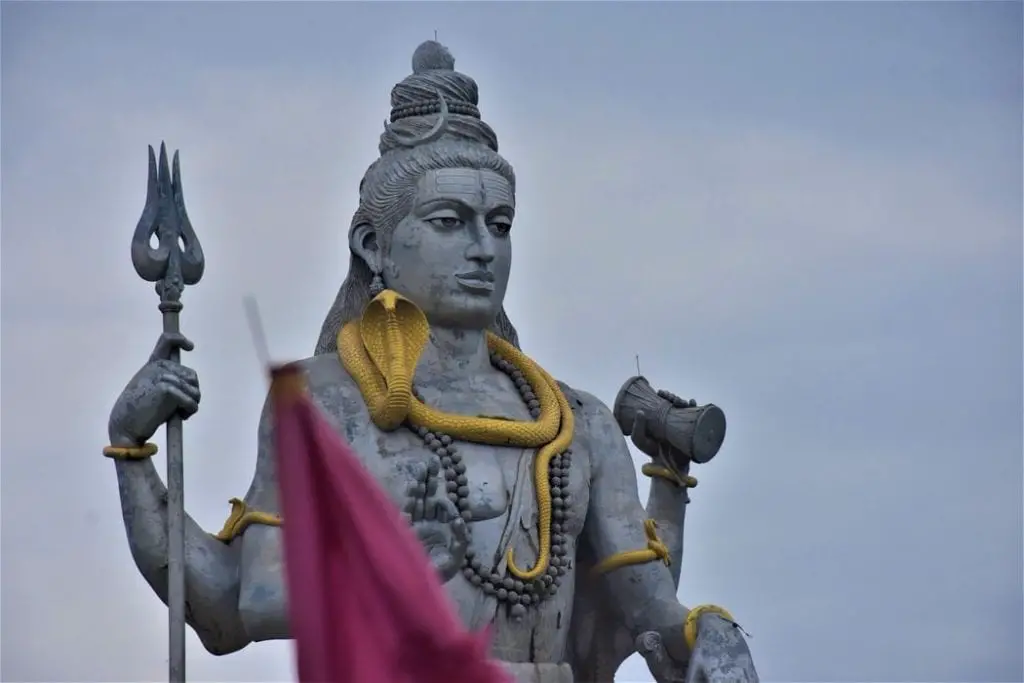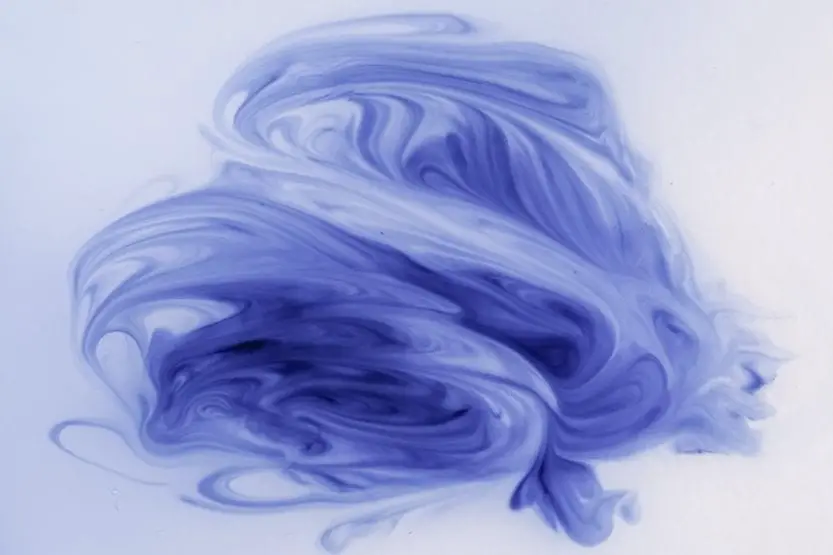When it comes to things that are blue, many different kinds of mythical creatures have been represented with that color.
Blue a color that has often been associated with negative human emotions. However, that can’t be far from true when it comes to mythology.
Over time, various mythical characters have been portrayed as blue. And sometimes, these figures are revered and loved. The diversity in how blue mythical characters are represented across cultures offers fresh perspectives on how people associated with the color blue.
The Color Blue in Mythology
The blue color is often depicted in mythology. It’s the color of the sky and the oceans, and holds an important place in depictions. Water gods and goddesses are sometimes portrayed as blue. In Greek mythology, some nymphs were also portrayed as blue.
In different countries, the color blue became associated with certain mythical entities. Sometimes, these depictions showed the mythical figures as powerful and benevolent, and at other times, scary monsters were colored blue.
Usually, these depictions have to do with the nature of the mythical character, and what that color meant to the society the character was from.
Kludde from Belgian Folklore
The Kludde was a monster. It freely roamed the Flemish countryside and played mischievous tricks on anyone it came across. The Kludde’s appearance was striking. It had an imposing figure, and resembled a large black dog.
As a shapeshifter, the Kludde could assume any identity it wanted to. In different stories, it has appeared in different forms. However, there was a tell-tale feature that immediately gave the Kludde away. You would know that you had encountered the Kludde if you spotted two bright blue flames dancing around the creature.
These bright blue flames are the Kludde’s eyes. If you were to run into a black dog, or any other animal in the dark in the Flemish countryside, always look out for two blue lights.
The Kludde is not a benevolent entity. It’s a monster that is known for pulling its victims to a watery grave. The Kludde is often found near water bodies. It lives in the water. And if any children strayed too far in the country and accidentally came to a body of water the Kludde was hiding in, their lives could be in danger.
There are other places that the Kludde enjoys hiding in as well. These include the hollow of trees, under desolate bridges, and other places where they might run into people who have strayed. The Kludde is extremely fast, and also possesses the ability to talk like a human. It’s extremely difficult to outrun the Kludde. It’s believed that when an evil witch or wizard dies, then the Kludde is born from their remains. This mythical creature got its name from the sound it makes while running. It says ‘Kludde, Kludde’ as it chases its victims.
The Oni from Japanese Folklore
In Japanese mythology, the Oni are ogres. These ogres are born from the souls of the treacherous who are sent to Hell. After arriving in Hell, they become loyal servants of the Great Lord of Hell, Enma. In Hell, their duty is to mete out punishments to punished humans. They spend their days torturing and tormenting people, same as they did in life.
Sometimes, a person can be so evil in life, that he turns into an Oni before he dies and descends to Hell. In these situations, they create hell on Earth until a brave hero steps in to stop them.
The Oni are usually portrayed as having either blue, red, or green skin color. They have two demon-like horns that protrude from the sides of their hide. Two tusks come out of their mouth. They have wild and unruly hair, and they always wear a tiger skinned loincloth around their waists. Typically, an Oni is also described as carrying a large club.
The Oni has become an important part of Japanese culture and folklore. A popular children’s tale, ‘The Red Ogre and The Blue Ogre’, is still told to children in Japan.
In the story, the Red Ogre was a nice Oni who wanted to play with the children in the neighboring village. But none of the children wanted to play with him because he was an Ogre. When he tried to be nice to them, they ran away.
Distraught, the Red Ogre goes to his friend, the Blue Ogre’, and tells him his story. The Blue Ogre sympathizes with his friend and comes up with a plan to help the Red Ogre. He says he will pretend to scare the children. The Red Ogre should appear right then and pretend to save the children. This will make the children see him as their savior and they will like him.
Excited, the Red Ogre agrees. The plan goes off well, and soon the Red Ogre and the children from the village are friends. This is when the Blue Ogre tells him that he is going away. If he stays with the Red Ogre, then the villagers may keep their children away from the Red Ogre. To make sure that the Red Ogre can play with his friends, the Blue Ogre leaves and goes far away. The Red Ogre is left crying for his friend.
Blue Men of the Minch from Scotland
In the Outer Hebrides in Scotland, there is a myth about strange men that attack sailors and others who enter the seas. Located between the Shiant Isles and the Isles of Saint Lewis, lies a strait. This strait is where the Blue Men of the Minch are most commonly found.
A reason behind how they got their names is because they wear things that are blue. They are known to wear blue caps, and their skin has a dull grayish-blue tinge to it from being in the water. The Blue Men of the Minch normally sleep in underwater caves. But sometimes, they are known to come out to torment sailors.
Whenever anyone crossed the strait, they had to be especially careful. When the Blue Men of the Minch were asleep, the weather was always pleasant. But when they woke up, they could call storms at will. These storms would then drown the sailors and take them to a watery grave. But if the sailors had done nothing to affect the Blue Men of the Minch, then they could expect a pleasant journey across the strait.
There are still many traditions among the locals about the Blue Men of the Minch. These green-bearded, blue cap-wearing creatures are an important part of local culture. On every Samhain, people gather to light a candle by the sea. This is believed to keep the Blue Men of the Minch at bay. This tradition asks the Blue Men to leave the seaweed lying on the seashore behind.
Lord Vishnu and Hindu Mythology

In Hinduism, the color blue has very different connotations. The color blue is seen as a divine light. The spiritual essence of people is believed to be blue. That is why Lord Vishnu, one of the most important Gods in Hindu religion, is always portrayed as blue. The blue, in this case, symbolizes his pure spirituality that can be seen by his devout followers.
One of his avatars, Lord Krishna, is also always portrayed as blue-skinned. In Hinduism, blue is also associated with poison. Lord Krishna got the color of his skin by drinking poisoned food. A similar story involves Lord Shiva, another important deity in the Hindu Pantheon. He drank poison to save the world, and this poison remained in his throat. This is how he got the name ‘Neel Kanth’ or blue throat.
Things that are blue are an important part of Hindu culture and religion. The blue lotus flower is a rare but necessary part of certain religious ceremonies involving the divine.
Poseidon and Greek Mythology
Another God that is known for having blue skin, is Poseidon from the Grecian Pantheon. Poseidon was the brother of Zeus, King of Olympus, and Hades, Lord of the Underworld. It is believed that the Olympian Gods defeated Kronos and the Titans to gain control of Olympus. After the battle, the three brothers met to decide who would rule the different human worlds. This included the skies, the oceans, and the world of the dead.
As the hero, Zeus chose the sky. Poseidon chose the oceans, and admitted that it would have been his first choice anyway. Hades was left to rule the Underworld.
As the God of all oceans and water bodies, Poseidon was strikingly blue in color. His weapon of choice was a Trident. He ruled over all the oceans, and his followers knew that they must worship him if they want to enjoy the water’s bounty. Poseidon was an important God. The water contained fish, trade routes, and was necessary for human life. In Greek mythology, only Zeus and Hera ranked above Poseidon.
Things that are blue have been represented in mythology through the ages. From gods to monsters, the color blue has always ranked high among the most important colors used in describing and illustrating mythology.



